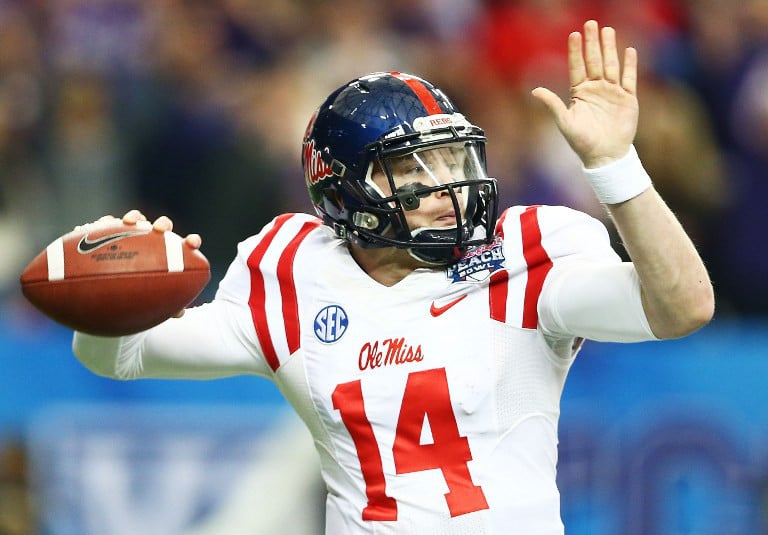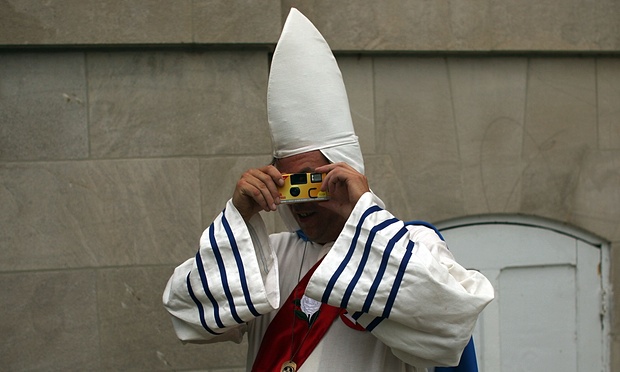There is an ideological battle raging across the American south right now, a battle that is in many ways the final, lingering conflict of the American civil war itself.
On a clay hill south of town, County Road 258 splits between two houses, right and left. I went to the right, recently, when a young black woman stepped outside. She wore a T-shirt that read “Ole Miss”.
She smiled. She didn’t realise she stood on the front line of a cultural war, where new arguments over an old flag are only the latest skirmish.
“I’m looking for Daniel Orr,” I said. “A Ku Klux Klan guy.”
She laughed. “Danny lives right there,” she said, pointing to the other house. “But no, Danny’s not in the Klan.”
By the time I made it across to the other house, Danny’s wife, Jane, came screaming out onto her porch. Her voice rose over the barking of several dogs at her side. “We live here!” she said. The black woman next door had already called. “You can’t tell people Danny’s in the Klan! How did you find out about him?”
His name is on his website .
“No, it’s not,” she said. “It’s not on there.”
But it is. A link at the bottom invites readers to “Email the Imperial Wizard of the White Knights”, and leads to his personal email address, which contains his full name. The same name registered to property here, on County Road 258.
Jane extended a finger down the road. “These are blacks!” she said. “They don’t go on the internet.”
And no, she said, Danny would not come outside and speak for himself.
There is an ideological battle raging across the American south right now, a battle that is in many ways the final, lingering conflict of the American civil war itself. In South Carolina the state legislature will likely vote in the coming week on whether to remove the Confederate battle flag from the capitol grounds; in Mississippi the battle flag is sewn right into a corner of the official state flag, and there will be no emergency hearings to tear it out, but the public outcry is growing .
In any war, a belligerent force protects its capital to the end, and the cultural capital of the southern US states lies here in Oxford, Mississippi. It is a paradoxical place, both the last bastion of old traditions and the vanguard of new ideas.
Now the forces of change are mustering, in north Mississippi. Men like Danny Orr feel besieged.
“He is pissed at you,” his wife said. Her voice trailed off. “If something happens…”
County Road 258 no longer feels secure for the Imperial Wizard.

The nickname for the University of Mississippi does not stand for Old Mississippi but the nickname given to the mistress of slave plantations. (Streeter Lecka/AFP)
Pioneer settlers called this place “Oxford” because they intended it, from the beginning, to be an intellectual crossroads. Long before the civil war ended 150 years ago, landowners from around the state sent their sons here to the University of Mississippi.
I grew up in Mississippi and watched friends and relatives graduate from the school, and never once heard it called by its proper name. We called it “Ole Miss”, which I assumed stood for “Old Mississippi”. It doesn’t. The antebellum gentry gave it the nickname they’d heard slaves use for the mistress of their plantations: Ole Miss.
On Thursday, the same day the Imperial Wizard fortified himself against change, a cluster of Ole Miss professors met at sundown to plot how best to foment it. They gathered at the home John T Edge, director of the university’s Southern Foodways Alliance, in a scene that could have unfolded 100 years ago: They sat on a leafy front porch, sipping drinks garnished with mint, drawling stories of rebellion. But the rebel heroes of their stories were not white, moustached colonels and spies; they are black students who dared attend and push back against old notions at Ole Miss.
“I don’t use that name, though,” Edge said. “Most faculty have stopped calling it Ole Miss.”
Instead of erasing history, according to English professor Chris Offutt, progressive staff have worked to subvert it. For instance, Vardaman Hall – named for one of Mississippi’s most bitterly racist governors – now houses the Institute for Racial Reconciliation. James K Vardaman, who once declared himself willing to lynch “every negro in the state”, would hate it.
In recent years the school has stopped deploying the Confederate battle flag at official functions, and a few years ago it abolished its mascot, Colonel Reb.
Those moves caused an uproar among locals, some of whom didn’t know the original meanings of the cherished symbols – or that Colonel Reb, with his cavalry hat, was an officer in the army fighting to preserve slavery.
One of Sierra Mannie’s earliest memories is of protesting the state flag in Ridgeland, Mississippi. She was perhaps eight years old.
It was morning at a school assembly attended by parents, and everyone stood for the US pledge of allegiance, facing the national flag. Then they turned to the state flag, with its Confederate battle flag inset. One by one, Mannie said, all the people on her side of the assembly hall – the side where black families stood – sat down. On the other side of the room, white children and parents continued to stand.
“I felt my mama pull me down to my seat,” she said. “I didn’t understand it at the time. Now I do.”
They didn’t want to salute a flag that stood for the oppression of slaves.
Mannie is 22 now, a senior at Ole Miss, where about 15% of studentstoday are black. On Saturday she gathered friends and posters, making plans to protest on the courthouse steps, incensed that Mississippi’s legislature had delayed addressing the question of the flag until it reconvenes in January.
I asked Mannie whether, if the man who lived next door was a member of the Ku Klux Klan, she would want to know.
“Yes,” she said.

Spencer Platt/Getty Images
I returned to County Road 258, and turned left. Danny Orr’s truck sat out front, with a miniature rebel flag on its bumper. Again Jane emerged from the house to answer on his behalf.
“He’s mad. He doesn’t want to talk to you.” She cocked an eyebrow. “And you don’t want to talk to him. Trust me.”
On the right side of the fork in the county road, I knocked on the door to the young black woman’s house. It was a tiny wood-frame structure on stilts.
Inside she introduced her two children, a five-year-old girl and an infant boy.
Yes, she remembered about Danny.
Yes, she had called them about the Klan thing.
Jane Orr had told her: “Hell no, he’s not in the Klan. I’ve been married to this man 13 years. I’d know if he was in the Klan.”
I showed the proof to the Klansman’s next-door neighbor.
She sat quietly for a moment, bouncing her baby in her lap. And then slowly the scaffolding of her face collapsed. She reached for a thin blue dishtowel, and wiped tears from her eyes.
“I was close to her,” the woman whispered.
She wasn’t indignant. She was grieving.
She talked about how Jane had driven her daughter home from school once. About how Jane had visited her house. “She’s been in my mama’s house,” she said.
For a moment the revelation about the Orrs didn’t seem helpful. It seemed hurtful.
“No. It’s better to know,” their neighbor said. She dabbed her eyes and drew back her shoulders. “It’s better to look and see.”
In 1865, at the end of the civil war, the Confederate poet Abram Ryan addressed the battle flag. He wrote:
In this little verse Ryan declared the Confederate battle flag finished, in 1865, and that to “touch it” – to unfurl it on bumper stickers, or above statehouses – would be ruinous.
People here never furled the flag. The University of Mississippi owns the largest Confederate battle flag in the world and for years would unroll it on the field at halftime during football games. It became so familiar that, like the name “Ole Miss”, or Colonel Reb, many people here divorced the emblem from its original meaning.
Now a new generation in Oxford – throughout the American south – is embracing what a weeping black mother grasped in an instant, with the Klan at her back and a baby in her lap: The truth can be painful. But it’s better to look and see.